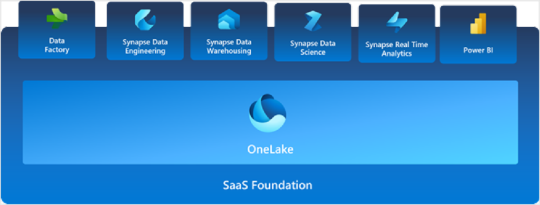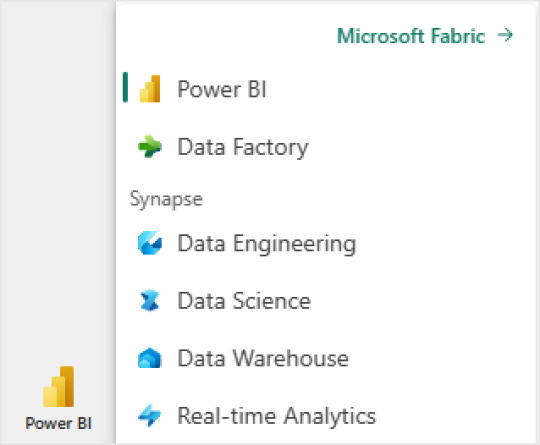Text
Announcing Delphix Compliance Services for Microsoft Fabric: Automating Data Compliance in Microsoft’s Next-Generation Platform
Overall, the collaboration between Delphix and Microsoft brings a wealth of value to large enterprises, providing a seamless and efficient way to achieve multi-cloud compliance while also unifying their data estate for analytics.

Today at Microsoft Build, Microsoft announced their next generation data platform, Microsoft Fabric. Delphix is proud and excited to be part of this solution and included in today’s announcement and the Microsoft Build demo session. Reflecting Microsoft and Delphix’s joint commitment to partner success and hands-on product collaboration, we collaborated on a solution to help unblock data access for wherever it’s needed across the enterprise to accelerate value generation from data — a mission tightly aligned with Delphix’s company vision. It’s been an ideal way for us to be better together, delivering the best of data compliance and data integration.
The Growing Impact of Privacy Regulations on Technology Professionals
Our customers tell us the growing framework of privacy regulations makes it harder for technology professionals who depend on sensitive data to do their jobs. For software developers, quality engineers, data analysts and scientists, AI/ML engineers, and citizen users of data, protecting privacy and complying with mandates such as GDPR and HIPAA often means relying on manual or sub-optimized processes for protecting sensitive data such as personally identifiable information (PII), customer lists, and payment details.
Unfortunately, these processes are not practical or sustainable. For one, they inevitably lead to delays in data access, hindering innovation, frustrating team members, and blocking citizen users from access to the data they need. But just as often they often fail to sufficiently protect data privacy, leaving sensitive data exposed to developers, testers, third parties, off-shore teams, systems administrators and others without a legitimate need-to-know. This is especially true with decentralized processes that are poorly governed across the enterprise. The challenge is making useful data available on demand while protecting sensitive elements from disclosure and replication.
Introducing Delphix Compliance Services for Microsoft Fabric
This is where Delphix comes into the picture. In close collaboration with Microsoft’s data integration team, we have introduced Delphix Compliance Services for Microsoft Fabric. Delphix provides intelligent, scalable, and seamless data masking for Microsoft Fabric users, allowing them to achieve multi-cloud data compliance in a way that is secure, efficient, easy-to-manage, and sustainable.
For background, Delphix software has a proven track record of masking data across Microsoft and non-Microsoft environments. We have worked with enterprises of all sizes, industries, and geographies, to address both cybersecurity requirements and privacy mandates. Critically for cloud migration use cases, our masking technology works with both non-cloud and cloud environments, helping many businesses shift their applications and data to the cloud. With this collaboration, Microsoft and Delphix are bringing our proven technology to the Microsoft Fabric platform in an experience tailored for ease-of-use and fast path to value.
Delphix Compliance Services for Microsoft Fabric provide masking APIs as a service so users can transform sensitive data to fictitious but realistic values, all from within the data flows. Like in the below diagram, you can simply call Delphix masking APIs from within your data flow, to ensure that data is compliant when being moved from Point A to Point B: you can mask and move data all in a single data flow. This approach preserves the utility of the data for analytics and BI without disclosing sensitive values such as PII. Furthermore, the solution supports the more than 170 source and target connectors provided by Microsoft’s platform and ensures referential integrity across multi-cloud environments. As a result, Delphix provides masking for even the most complex analytics scenarios.

The Benefits for Developers, Data Professionals, and Citizen Users
Delphix Compliance Services was built to make privacy compliance easy and automatic. It works seamlessly with Microsoft’s platform, including a code-free experience directly within the UI. This means Microsoft users can easily configure masking rules to be applied when moving data for secure analytics.
Delphix offers pre-built, deterministic masking algorithms to address major privacy regulations such as GDPR, HIPAA, and CCPA, so citizen users do not have to be experts in regulatory compliance or in data masking. The algorithms intelligently mask fields such as birth dates, phone numbers, zip codes, and other fields so they remain useful for analytics, testing, and other purposes. Once those masking algorithms have been configured, they are applied automatically, every time, for consistent protection.
Important for those users with enterprise-scale complex or multicloud data estates, our solution intelligently enforces referential integrity when masking data. This means that sensitive fields such as names, addresses, and account numbers are masked identically across data sources. For example, the patient name “Lisandra Preston” that is masked to “Iwana Villar” in one location will be masked to “Iwana Villar” in all others. This means that integrated environments will function the same way, even after masking has been applied.
The Benefits for the Enterprise
With Microsoft Fabric, Microsoft gives enterprises the ability to unify the data estate for analytics and other use cases. By collaborating with Delphix, Microsoft makes it seamless for those enterprises to apply data masking at any scale and complexity. This makes it much easier and more efficient to get value from data, unblocking data streams and accelerating the pace of innovation, while protecting data privacy.
“Data compliance is a major challenge for businesses today,” said Jedidiah Yueh, Delphix CEO. “Our multicloud data compliance and masking solution is designed to make Microsoft Fabric the easiest, most secure, and most compliant cloud in the industry.”
Underscoring the importance of our collaboration, Microsoft’s VP of Data Integration Faisal Mohamood said, “We’re pleased about the multicloud data compliance solution for use in Microsoft Fabric that the Delphix and Microsoft teams have created in close collaboration. Together, we’ve developed a robust data compliance and integration solution for our customers.”
By automating data compliance with our leading masking technology, the solution removes one of the most common barriers to accelerating innovation, business insights and AI/ML adoption. In turn, businesses will bring new features and capabilities to market faster without exposing themselves to unnecessary risks.
Overall, the collaboration between Delphix and Microsoft brings a wealth of value to large enterprises, providing a seamless and efficient way to achieve multicloud compliance while also unifying their data estate for analytics. With its code-free experience, built-in data governance, and out-of-the-box integrations with widely used Microsoft solutions, this solution is an ideal choice for enterprises looking to leverage their data for competitive advantage while also ensuring compliance with all major regulations.
Note: PreludeSys is a trusted Delphix partner. The original source of the content is delphix.com/blog.
#Data compliance for Microsoft Fabric#gdpr compliance consulting services#delphix authorised service provider#microsoft fabric data analytics#microsoft fabric consulting company#microsoft fabric services
0 notes
Text
Microsoft Fabric – Meet the powerful, cutting-edge data analytics platform
What is Microsoft Fabric?

Microsoft Fabric is an all-in-one analytics solution for enterprises that covers everything from data movement to data science, Real-Time Analytics, and business intelligence. It offers a comprehensive suite of services, including data lake, data engineering, and data integration, all in one place.
With Fabric, you don’t need to piece together different services from multiple vendors. Instead, you can enjoy a highly integrated, end-to-end, and easy-to-use product that is designed to simplify your analytics needs.
The platform is built on a foundation of Software as a Service (SaaS), which takes simplicity and integration to a whole new level.
SaaS foundation

Microsoft Fabric brings together new and existing components from Power BI, Azure Synapse, and Azure Data Factory into a single integrated environment. These components are then presented in various customized user experiences.
Fabric brings together experiences such as Data Engineering, Data Factory, Data Science, Data Warehouse, Real-Time Analytics, and Power BI onto a shared SaaS foundation.
This integration provides the following advantages:
With the Microsoft Fabric SaaS experience, all the data and the services are seamlessly integrated. IT teams can centrally configure core enterprise capabilities and permissions are automatically applied across all the underlying services. Additionally, data sensitivity labels are inherited automatically across the items in the suite.
Fabric allows creators to concentrate on producing their best work, freeing them from the need to integrate, manage, or understand the underlying infrastructure that supports the experience.
Components of Microsoft Fabric

Microsoft Fabric offers the comprehensive set of analytics experiences designed to work together seamlessly. Each experience is tailored to a specific persona and a specific task. Fabric includes industry-leading experiences in the following categories for an end-to-end analytical need.
Fabric brings together all these experiences into a unified platform to offer the most comprehensive big data analytics platform in the industry.
Microsoft Fabric enables organizations, and individuals, to turn large and complex data repositories into actionable workloads and analytics, and is an implementation of data mesh architecture. To learn more about data mesh, visit the article that explains data mesh architecture.
OneLake and lakehouse – the unification of lakehouses
The Microsoft Fabric platform unifies the OneLake and lakehouse architecture across the enterprises.
OneLake
The data lake is the foundation on which all the Fabric services are built. Microsoft Fabric Lake is also known as OneLake. It’s built into the Fabric service and provides a unified location to store all organizational data where the experiences operate.
OneLake is built on top of ADLS (Azure Data Lake Storage) Gen2. It provides a single SaaS experience and a tenant-wide store for data that serves both professional and citizen developers. The OneLake SaaS experience simplifies the experiences, eliminating the need for users to understand any infrastructure concepts such as resource groups, RBAC (Role-Based Access Control), Azure Resource Manager, redundancy, or regions. Additionally, it doesn’t require the user to even have an Azure account.
OneLake eliminates today’s pervasive and chaotic data silos, which individual developers create when they provision and configure their own isolated storage accounts. Instead, OneLake provides a single, unified storage system for all developers, where discovery and data sharing is trivial and compliance with policy and security settings are enforced centrally and uniformly. For more information, see What is OneLake?
Organizational structure of OneLake and lakehouse

OneLake is hierarchical in nature to simplify management across your organization. It’s built into Microsoft Fabric and there’s no requirement for any up-front provisioning. There’s only one OneLake per tenant and it provides a single-pane-of-glass file-system namespace that spans across users, regions and even clouds. The data in OneLake is divided into manageable containers for easy handling. The tenant maps to the root of OneLake and is at the top level of the hierarchy. You can create any number of workspaces within a tenant, which can be thought of as folders.
The following image shows the various Fabric items where data is stored. It’s an example of how various items within Fabric would store data inside OneLake. As displayed, you can create multiple workspaces within a tenant, create multiple lakehouses within each workspace. A lakehouse is a collection of files, folders, and tables that represents a database over a data lake. To learn more, see What is a lakehouse?.
Every developer and business unit in the tenant can instantly create their own workspaces in OneLake. They can ingest data into their own lakehouses, start processing, analyzing, and collaborating on the data, just like OneDrive in Office.
All the Microsoft Fabric compute experiences are prewired to OneLake, just like the Office applications are prewired to use the organizational OneDrive. The experiences such as Data Engineering, Data Warehouse, Data Factory, Power BI, and Real-Time Analytics use Onelake as their native store. They don’t need any extra configuration.
OneLake is designed to allow instant mounting of existing PaaS storage accounts into OneLake with the Shortcut feature. There’s no need to migrate or move any of the existing data. Using shortcuts, you can access the data stored in Azure Data Lake Storage.
Additionally, shortcuts allow you to easily share data between users and applications without moving or duplicating information. The shortcut capability extends to other storage systems, allowing you to compose and analyze data across clouds with transparent, intelligent caching that reduces egress costs and brings data closer to compute.
Note: PreludeSys is a Microsoft Gold partner.
The original source of the content is learn.microsoft.com/en-us/fabric/.
#what is microsoft fabric#benefits of microsoft fabric#microsoft fabric consulting company#microsoft service fabric
1 note
·
View note